BIOENERGY REVIEW 2023
How bioenergy contributes to a sustainable future
CHAPTERS

Foreword
Between the social foundation and the ecological ceiling: The safe and just space for humanity
The sustainable use of biogenic resources to provide food and feed, building materials, chemicals, textiles, and energy services is known as the bioeconomy. The bioeconomy has played a major role throughout history in helping humanity secure the resources necessary for its social foundation. An important element of the bioeconomy is bioenergy. Bioenergy, based on the further development of effective strategies and technologies, can support a just transition to renewables and the transformation of the energy system, leading to achievement of the Sustainable Development Goals (SDGs).
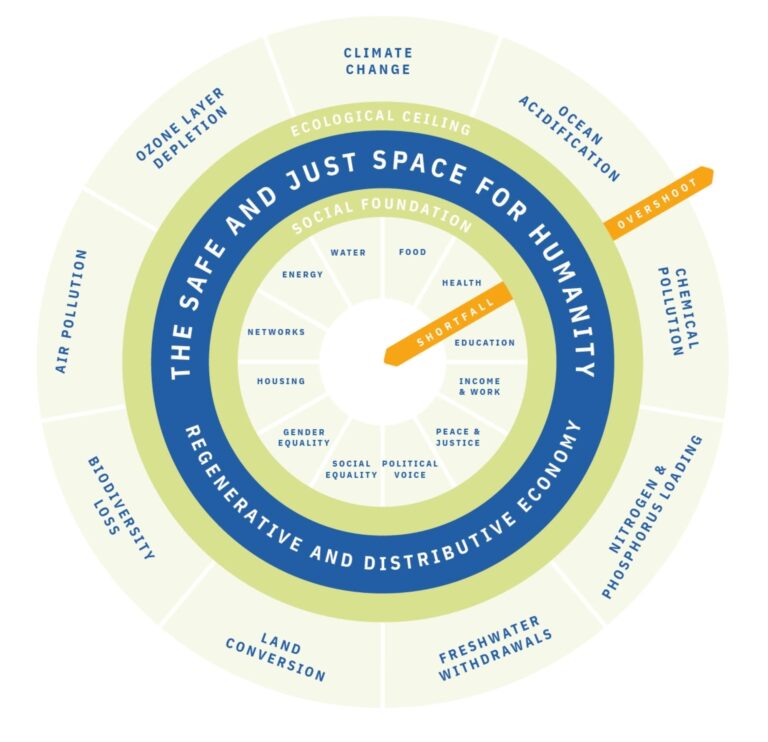
Historically, human progress has developed hand in hand with the resources consumed. Technological advancements have considerably broadened the availability of resources and their efficient deployment, especially over the course of the last century. In turn, however, the population has grown significantly, as has the resource demand per capita, and thus overall resource consumption.
Today, there is overwhelming evidence that current rates of resource consumption have already resulted in negative and potentially irreversible impacts on the planet, a pattern that is set to continue. Overshoot of the planetary boundaries is, among other things, causing climate change and biodiversity loss and will ultimately halt and reverse human progress. A phase-out of the use of fossil resources, a circular use of minerals/materials, and the utilisation of regenerative/renewable resources and energy are key to staying within the planet’s ecological limits. Resource utilisation will need to be improved and the carrying capacity of the planet respected.

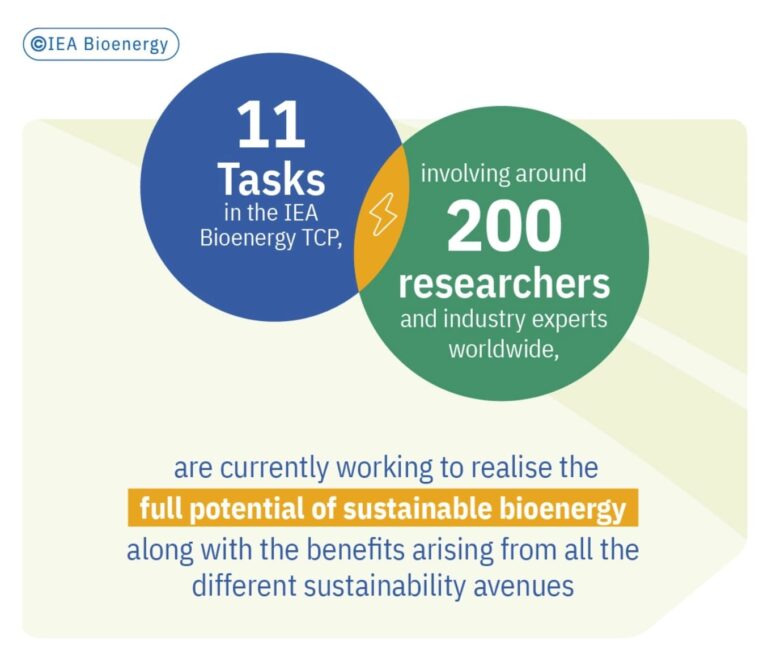
Bioenergy is one of the important and necessary elements in combating climate change. Climate change, however, is not the only driver of bioenergy deployment. The COVID-19 pandemic demonstrated the risks inherent in global supply chains and—triggered by rising energy prices—the value of a diversified supply that is more regionally based. With energy security having again become a critical issue, bioenergy is able to improve the resilience of societies around the globe by providing greenhouse gas emission reductions, regional energy supply, income to rural communities, and energy system flexibility.
This report presents an evidence-based assessment of the status of bioenergy around the world. The assessment is based on work conducted by some 200 experts, active within the Tasks of the Bioenergy Technology Collaboration Programme (TCP) of the International Energy Agency (IEA). The aim of IEA Bioenergy is to advance technologies and to provide factual input to evidence-based decisions. The information presented is intended to reinvigorate awareness and interest in bioenergy, address concerns arising within the public debate, demonstrate the synergies between bioenergy and other renewables, and point out opportunities that can be seized by many countries around the globe.
The report also seeks to point out opportunities that can be seized by IEA Bioenergy member countries, most of which have a strong bioenergy strategy already in place, and also by countries outside the IEA Bioenergy membership. The information provided here is complemented by information from other multilateral initiatives such as the International Renewable Energy Agency (IRENA), the Food and Agriculture Organisation (FAO) of the United Nations, and the Global Bioenergy Partnership (GBEP): these organisations focus on emerging economies and developing countries and, for instance, on topics such as phasing out the traditional use of biomass and replacing it with clean cooking options.
The report is divided into two parts: Part A “Strategic View on Biomass and Bioenergy” deals with bioenergy and its contribution to a sustainable future. Part B “Technologies for Sustainable Bioenergy” describes the status and perspectives of different bioenergy technologies. Sustainable development is a two-sided coin: i) to avoid shortfalls in providing a minimum social foundation for all, while ii) making sure not to overshoot the ecological ceiling. These two sides are intended to be diametrical and must therefore be balanced—which is ultimately a political issue.
The IEA Bioenergy Technology Collaboration Programme aims to provide knowledge on possible ways of achieving this balance, with a focus on the link between humanity and the biosphere.

Summary
Bioenergy, an important element in addressing climate change, securing energy supply, and providing income through regional biomass-supply chains, is today the largest source of renewable energy. Types of biomass can be used to produce power, heat, cooling, to transport biofuels, and as intermediate bioenergy carriers, such as renewable gas. Biomass can be used as a substitute for fossil energy carriers and thus reduce energy-related greenhouse gas (GHG) emissions.
On its own, however, bioenergy cannot achieve the required transformation and decarbonisation of our energy system. It is part of a circular bio-based economy and complements not only other renewable energy sources but also efforts to increase energy efficiency and reduce energy demand.
Sustainability is a key issue to consider in all human activities. Acting sustainably means meeting the needs of the present without compromising the ability of future generations to meet their own needs. Sustainability is a broad policy concept and is thought to consist of at least three main dimensions or “pillars”: the environmental, economic, and social dimensions.
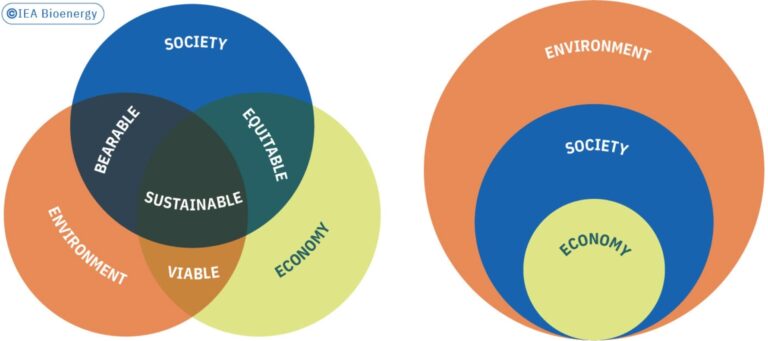
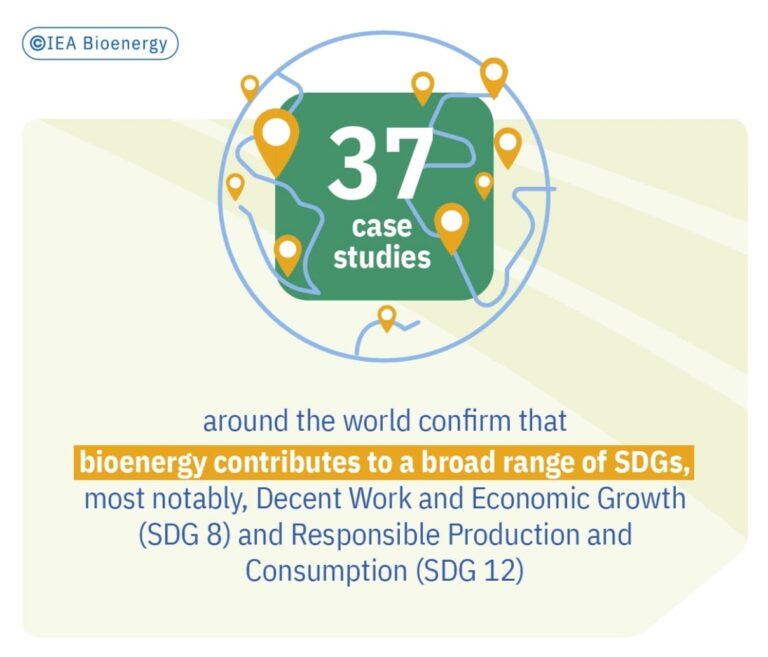
GHG emissions, the emission of local air pollutants, biodiversity, land and water use, etc., all come within the purview of environmental sustainability. There are ways of sustainably managing forests and agricultural landscapes so that they can deliver biomass for bioenergy to reduce GHG emissions while also maintaining or improving biodiversity, carbon sinks, and species abundance. In many regions, bioenergy has to comply with strict sustainability criteria and standards so as to assure effective GHG emission reductions; moreover, there is a growing awareness that preserving stocks of carbon in the soil, as well as biodiversity conservation, should be important elements in all our activities.
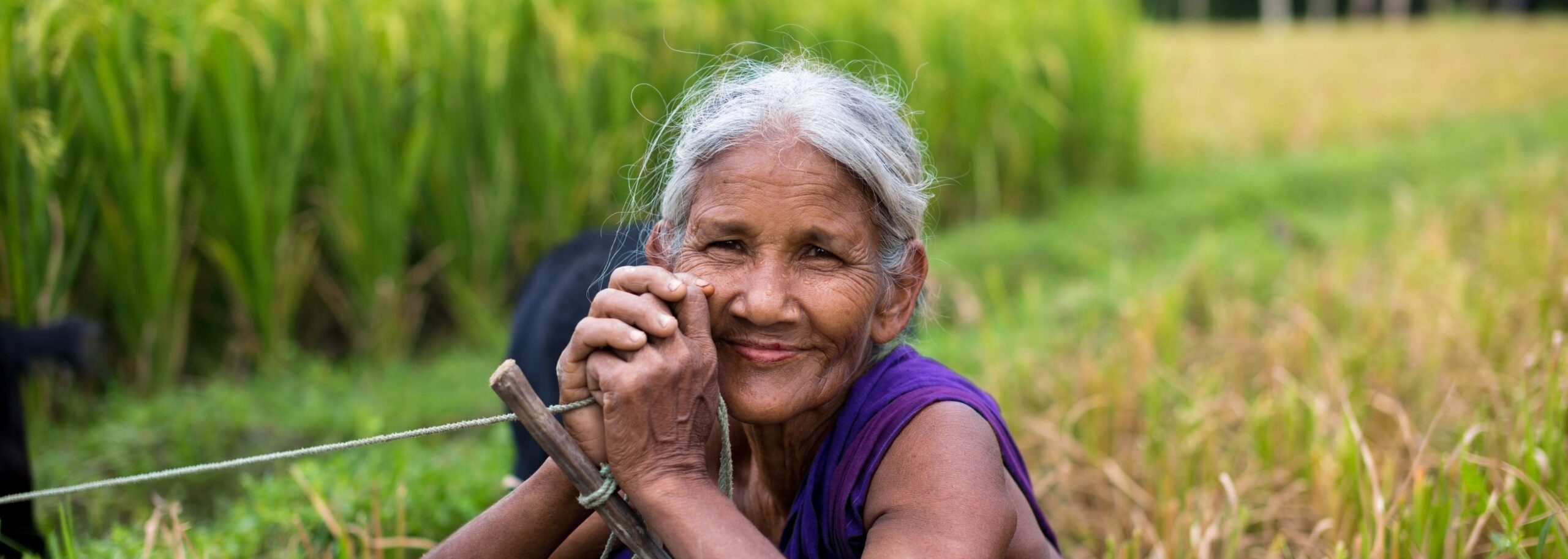
The term economic sustainability encompasses the supply of sufficient quantities of biomass feedstocks at reasonable prices. Being price-competitive with other (fossil or renewable) energy carriers is one of the biggest challenges for bioenergy. Significant quantities of biomass can be supplied at low cost, for example, straw from food/feed crop production or used cooking oil; but when larger quantities are extracted, costs increase. Costs for biomass feedstocks and bioenergy carriers vary regionally and also depend on their intended use and what competition there is from other market actors for the same feedstocks.
Creating a huge demand for biomass feedstocks may lead to overexploitation of ecosystems or to land use change, with negative consequences for biodiversity and the soil carbon stock. It is essential to carefully manage the mobilisation of biomass to safeguard the environment; biomass—being a limited resource —should also be used wisely. Wherever basic energy needs are already being met, a cascading use of biomass feedstocks is becoming a requirement.
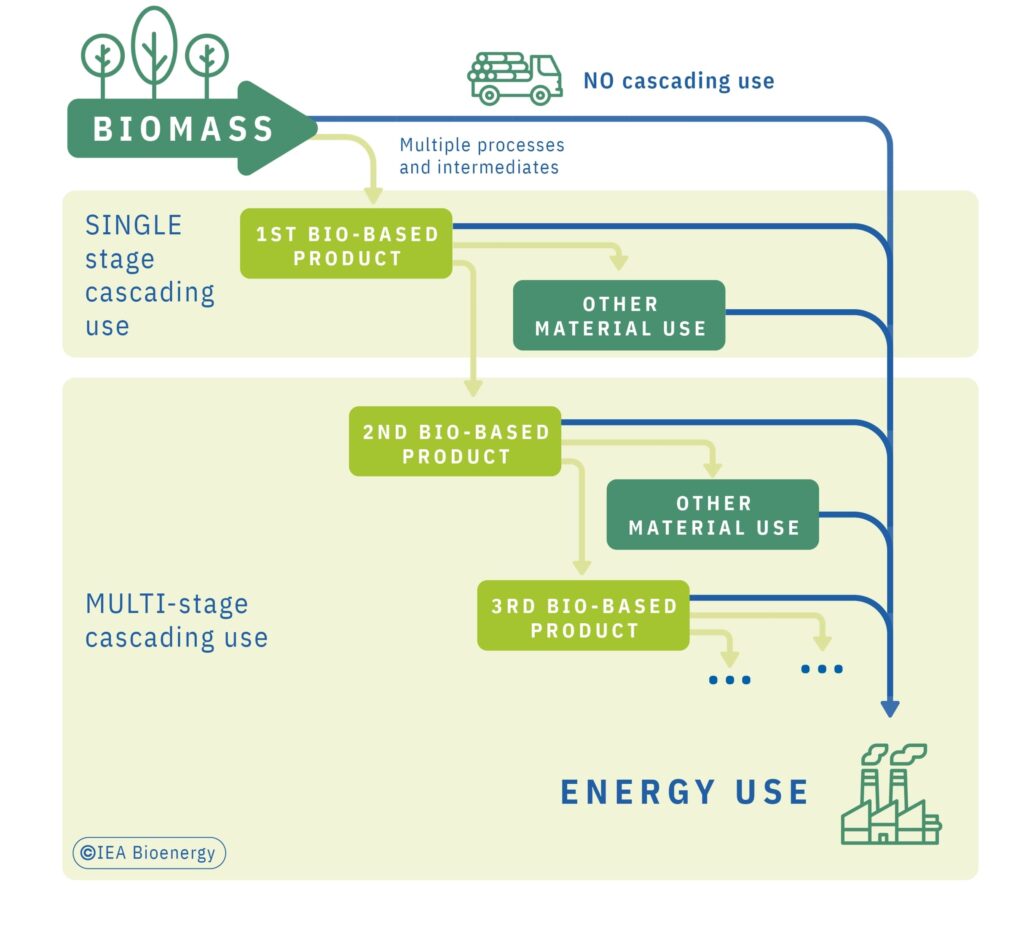
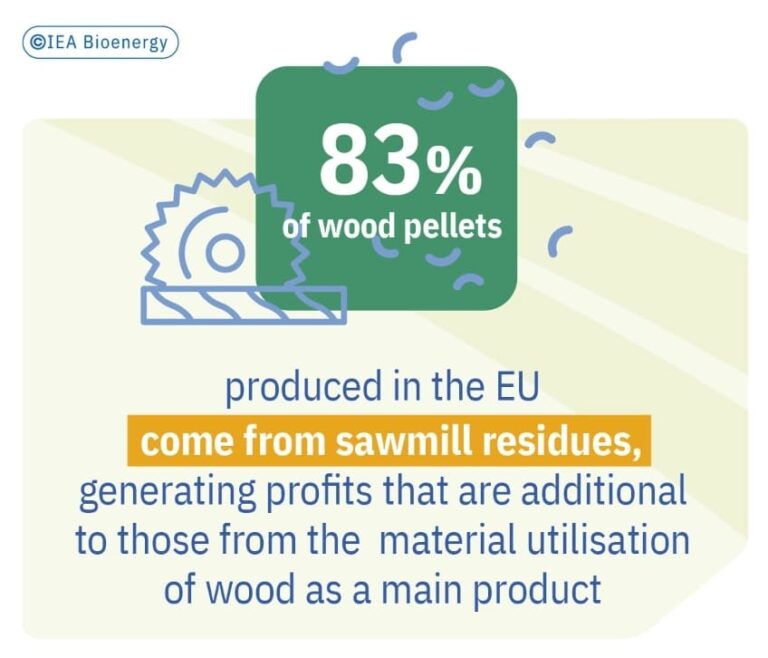
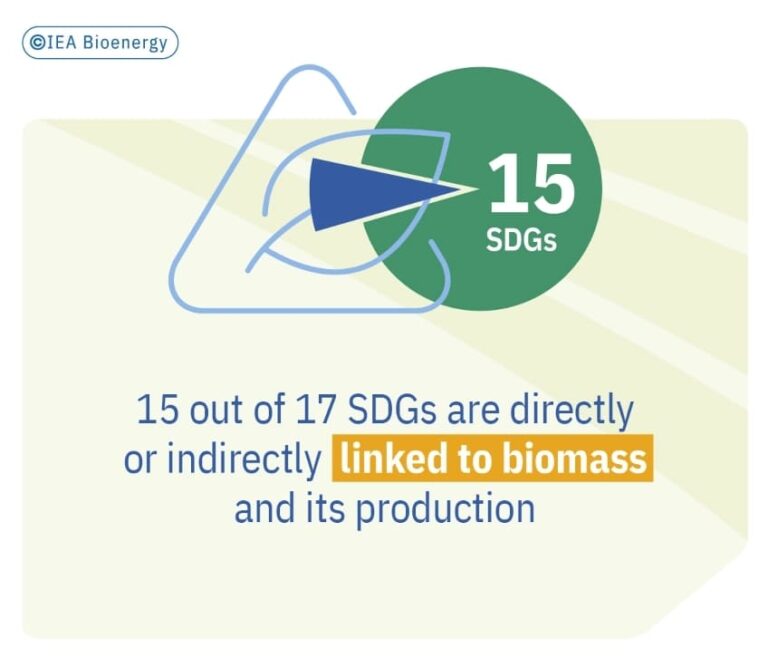
Social sustainability, finally, deals with how sustainability affects people, their health and well-being, and their ability to make a decent living. The 17 Sustainable Development Goals (SDGs), which all United Nations Member States have adopted and aim to achieve by 2030, balance the three dimensions of sustainability—environmental, economic, and social—and aim for a just transition to a sustainable future. Today, about 2.8 billion people globally still lack access to clean cooking solutions, relying on traditional burning of biomass over open fires to heat their food.

This traditional use of biomass is problematic, as open fires are inefficient and expose people (particularly women and children) to emissions of harmful air pollutants, which can lead to respiratory disease. There is consensus that the traditional use of biomass should be phased out as soon as possible. Modern bioenergy, namely the use of commercial solid, liquid or gaseous biomass-based fuels in efficient appliances can play an important role in achieving the SDGs, directly contributing, for example, to better health and well-being, affordable and clean energy, and action against climate change. Modern bioenergy offers the opportunity to use domestic resources more efficiently to provide energy and create income.
Bioenergy supports the transition to a low carbon economy in many ways and offers multiple benefits to society. Bioenergy acts as a substitute for fossil fuels and thus reduces GHG emissions. Bioenergy and biofuel installations can act as point sources of biogenic CO2 for carbon capture and storage or use; in specific cases, they even offer the opportunity to achieve net negative CO2 emissions.
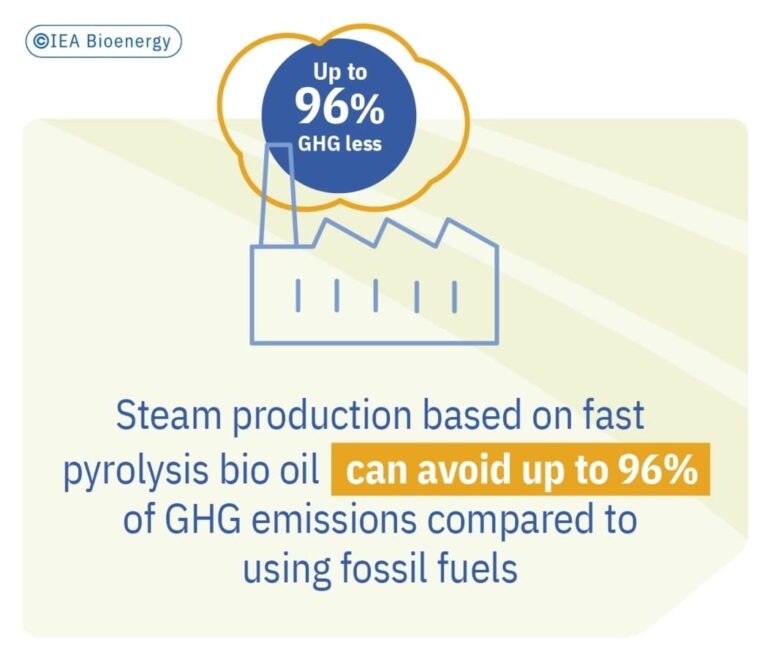
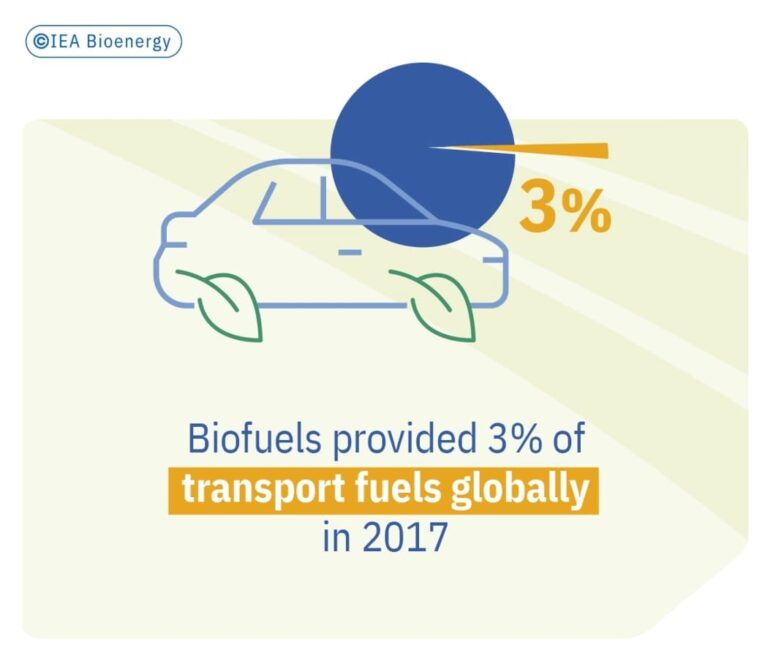
Biorefineries split biomass into disparate fractions that can be processed into a variety of products, including materials, chemicals, animal feed, pharmaceuticals, and energy. Intermediate bioenergy carriers, such as torrefied pellets and pyrolysis oils and other biocrudes, can be used to store energy, making transportation of the energy carrier more efficient. Bioenergy installations can provide heat and electricity on demand, cover baseload and peak demands, or shift energy provision between seasons. Solid, liquid, and gaseous bioenergy can be used in applications that are otherwise hard to decarbonise, such as high-temperature heat production for industry or for long-distance aviation, heavy-duty transport, and international shipping.
The most important bioenergy technologies include combustion, anaerobic digestion, gasification, pyrolysis, and hydrothermal liquefaction. This wide range of technologies provides bioenergy to the transport, heat, and electricity sectors, as well as ample opportunities to combine different feedstocks and technologies to produce a range of products in biorefineries. The technologies are, however, at various technology-readiness levels, from lab-scale research to large-scale demonstration and market maturity. While they are efficient at reducing GHG emissions, they come with costs that are often higher than those of competing technologies. Further research and development are needed to bring all such technologies to the market; policy frameworks will play an important role in facilitating the deployment of new technologies in a sustainable manner.
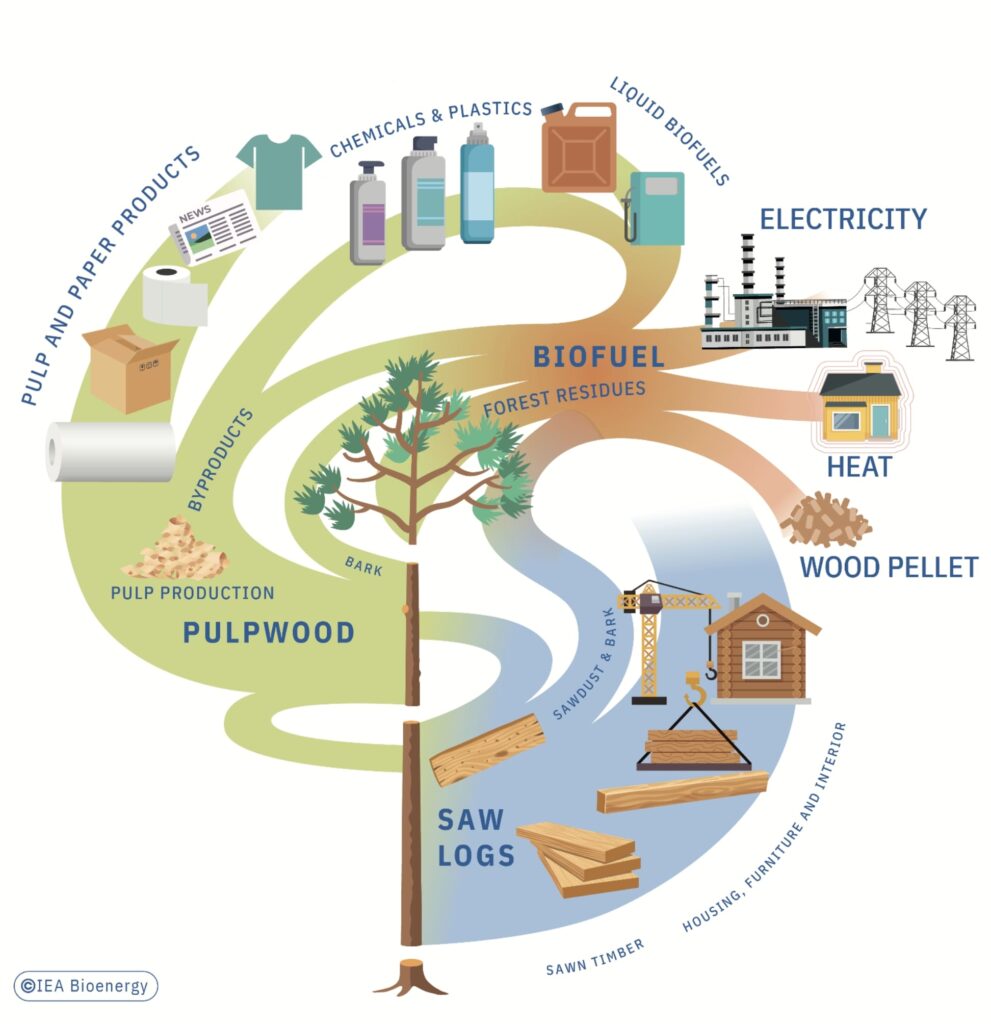
Despite its many benefits, bioenergy is still not globally implemented at the high level of sustainable capability needed for the desired energy transition. The wide range of bioenergy value chains with their many different biomass feedstocks, conversion processes, and possible applications make bioenergy a complex topic. Moreover, there can be competition between different services from biomass, and the supply potential, although large, is essentially finite. Governance systems are needed to assure sustainable sourcing of biomass feedstocks, their efficient conversion to renewable energy, and their deployment. Biomass trading is also required to connect biomass supply and end markets.
Policymakers have a crucial role to play in facilitating the energy transition, by giving it priority, creating markets for sustainable, low-carbon technologies, and promoting research and development.
